Pseudorapidity dependence of anisotropic flow in heavy ion collisions with ALICE
Freja Thoresen
Niels Bohr Institute
on behalf of the ALICE Collaboration
July 13, 2019

introduction


- Hot and dense medium created at the LHC
- Commonly referred to as the Quark-Gluon Plasma (QGP)
- Difference of pressure gradients along different axes drive flow of particles
- Gives rise to anisotropic distribution
anisotropic flow
- Fourier decomposition of azimuthal distribution of emitted particles [Voloshin, S. et al. Z.Phys. C70 (1996)]
\[ \frac{\mathrm{d}N}{\mathrm{d} \varphi} \propto f(\varphi) = \frac{1}{2 \pi} [1 + 2 \sum^\infty_{n=1} v_n \cos (n[\varphi - \Psi_n])]\] - with
\[ v_n = \langle \cos (n [\varphi - \Psi_n]) \rangle \]
\( v_2 \)
\( v_3 \)
\( v_1 \)
\( v_4 \)





anisotropic flow
flow as a function of pseudorapidity
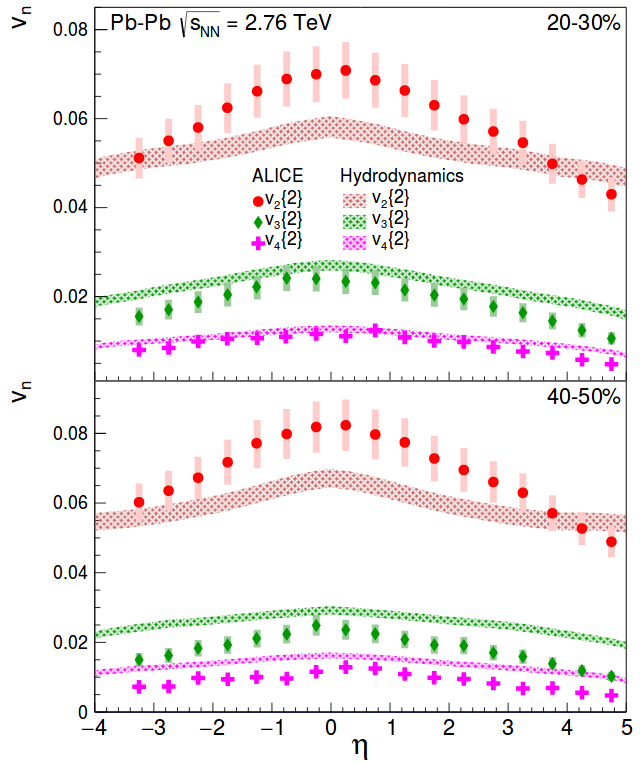
- \( v_n (\eta) \) give unique information about the hot and dense medium
-
Forward rapidities
[Phys.Rev.Lett. 116 (2016) no.21, 212301][Phys.Rev. C90 (2014) no.4, 044904]- Possible change in \( \eta /s \)
-
Shorter lifetime in the QGP phase
- Hadronic viscosity play larger role
flow as a function of pseudorapidity

This talk:
- Using Generic Framework [Bilandzic, Ante et al., Phys.Rev. C89 (2014)] w. different combinations of sub-events
- Run 2 measurements w. more statistics
- Significant improvement of systematics
- \( v_n (\eta) \) give unique information about the hot and dense medium
-
Forward rapidities
[Phys.Rev.Lett. 116 (2016) no.21, 212301][Phys.Rev. C90 (2014) no.4, 044904]- Possible change in \( \eta /s \)
-
Shorter lifetime in the QGP phase
- Hadronic viscosity play larger role
experiment
alice

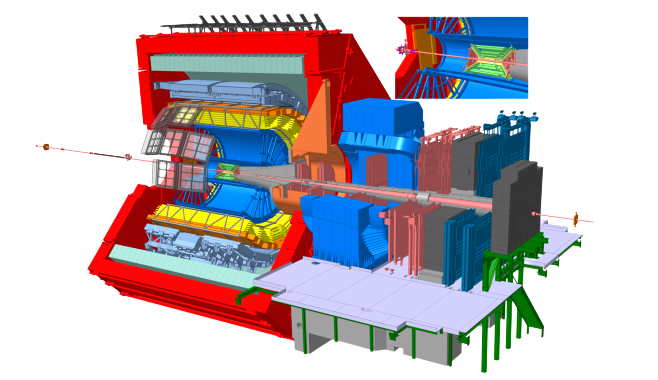
Forward Multiplicity Detector (FMD)
Time Projection Chamber (TPC)
- FMD3: \( -3.5 < \eta < -1.7 \)
- FMD1 & FMD2: \( 1.7 < \eta < 5.0 \)
- Scintillator
- \( -1.1 < \eta < 1.1 \)
- Tracking
V0 Scintillators
- V0A: \( 2.8 < \eta < 5.1 \)
- V0C: \( -3.7 < \eta < -1.7 \)
- Trigger
Inner Tracking System (ITS)
- Triggering
- Tracking
methods
- \( v_n \) is calculated using the Generic Framework [Bilandzic, Ante et al., Phys.Rev. C89 (2014)]
-
Correcting for non-uniform acceptance using weights
- \(Q_{n,p} = \sum_j w_j^p e^{in\varphi_j}\)
-
E.g. for 2-particle correlations the equations are
- \( \langle 2 \rangle = \frac{p_{n,1} Q_{-n,1} - q_{0,2}}{p_{0,1} Q_{0,1} - q_{0,2}} \)
- \(v_n = \sqrt{ \langle \langle 2 \rangle \rangle }\)
generic framework
- Non-flow: short-range correlations (e.g. jets and resonance decays)
-
\( \eta \)-gaps have shown be useful for removal of non-flow
- using the FMD the gap can increase from \( \Delta \eta \approx 1 \) and up to \( \Delta \eta \approx 4\)
-
E.g. for two particle correlations, the gap case is
- \( A \cap B = \emptyset\)
non-flow suppression using eta-gaps
How big should a \( \eta \)-gap be?
\( \langle 2 \rangle = \frac{p_{n,1}^A Q_{-n,1}^B}{p_{0,1}^A Q_{0,1}^B} \)
\( v_n\{2, |\Delta \eta |> x \} = \sqrt{\langle \langle 2 \rangle \rangle } \)
- The purely factorizing model express the factorization as,
\[ \langle v_n(\eta_a)v_n(\eta_b) \rangle = \langle v_n(\eta_a)\rangle \langle v_n(\eta_b) \rangle \]
\[ f_2(\Delta \eta) = \langle v_n(\eta_a)\rangle / \langle v_n(\eta_b) \rangle , \Delta \eta = \eta_a - \eta_b\]
- For factorization to be true (\(f_2(\Delta \eta) = 1\)) \( \rightarrow \) need at least a \( \eta \)-gap of 2.


Figure: Factorization from Pb-Pb 5.02 TeV data.
Figure: Factorization from Pb-Pb 5.02 TeV AMPT w. String Melting.
estimating factorising limit
\( \Delta \eta \)
- Reference particles are chosen from the TPC.
- FMD: \( |\Delta \eta| > 2 \)
- TPC: \(|\Delta \eta| > 0\)
- Example: \( v_n' \) in region B is calculated by, (assuming no decorrelation)
TPC
FMD
FMD
TPC
FMD
FMD
- Reference particles are chosen from the FMD.
- FMD: \( |\Delta \eta| > 4\)
- TPC: \(|\Delta \eta| > 2\)
- Example: \( v_n' \) in region B is calculated by, (assuming no decorrelation)
sub-events with pseudorapidity gap


Figures: Beginning of arrow is differential region, end of arrow is reference region
Secondaries in the forward multiplicity detector
Figure: Multiplicity densities of charged particles hitting the SPD and FMD in a HIJING simulation with GEANT3 as transport code for 0 − 5% central events.
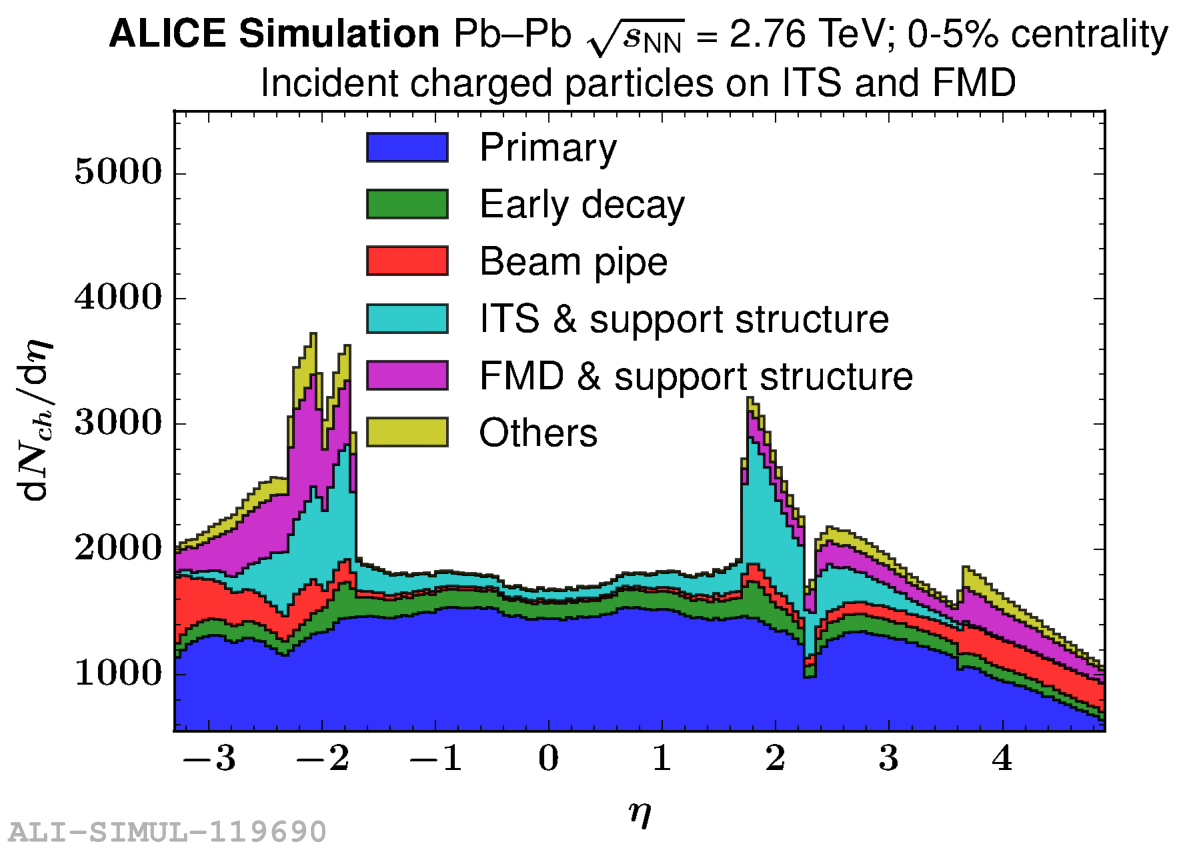
distribution of secondary particles from material
- Signal contamination from material interactions (secondaries)
- Dilute observation of \( \varphi \)
-
No tracking
- need other method to deconvolve signal
Secondaries distributed around primaries: $$P(\varphi') = f(\varphi) \circ P(\varphi)$$
Observed in the detector: \( \Delta \varphi' = \varphi_1' - \varphi_2\)
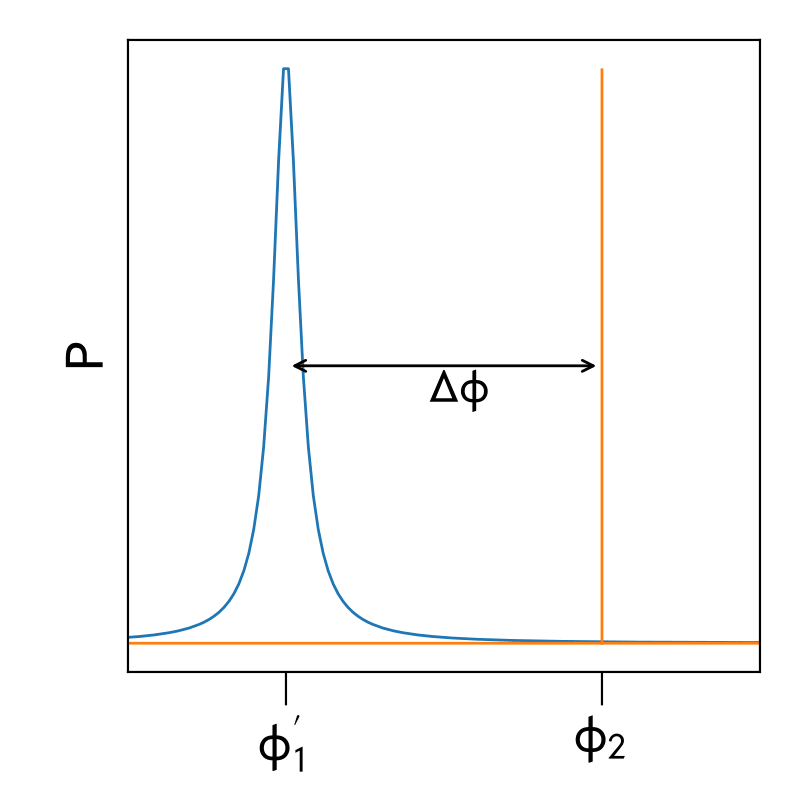
If we know \(\mathcal{F}(f(\varphi)) \) we can extract \( \langle \langle v_n' v_n \rangle \rangle^{true} \)
smearing by secondary particles
Figure: Illustration of smearing in \( \varphi \) by secondary particles
- \( \Delta \phi \) of observed secondary particle to primary particle
- Fourier transform \( f(\varphi) \) for each vertex and \( \eta \) bin
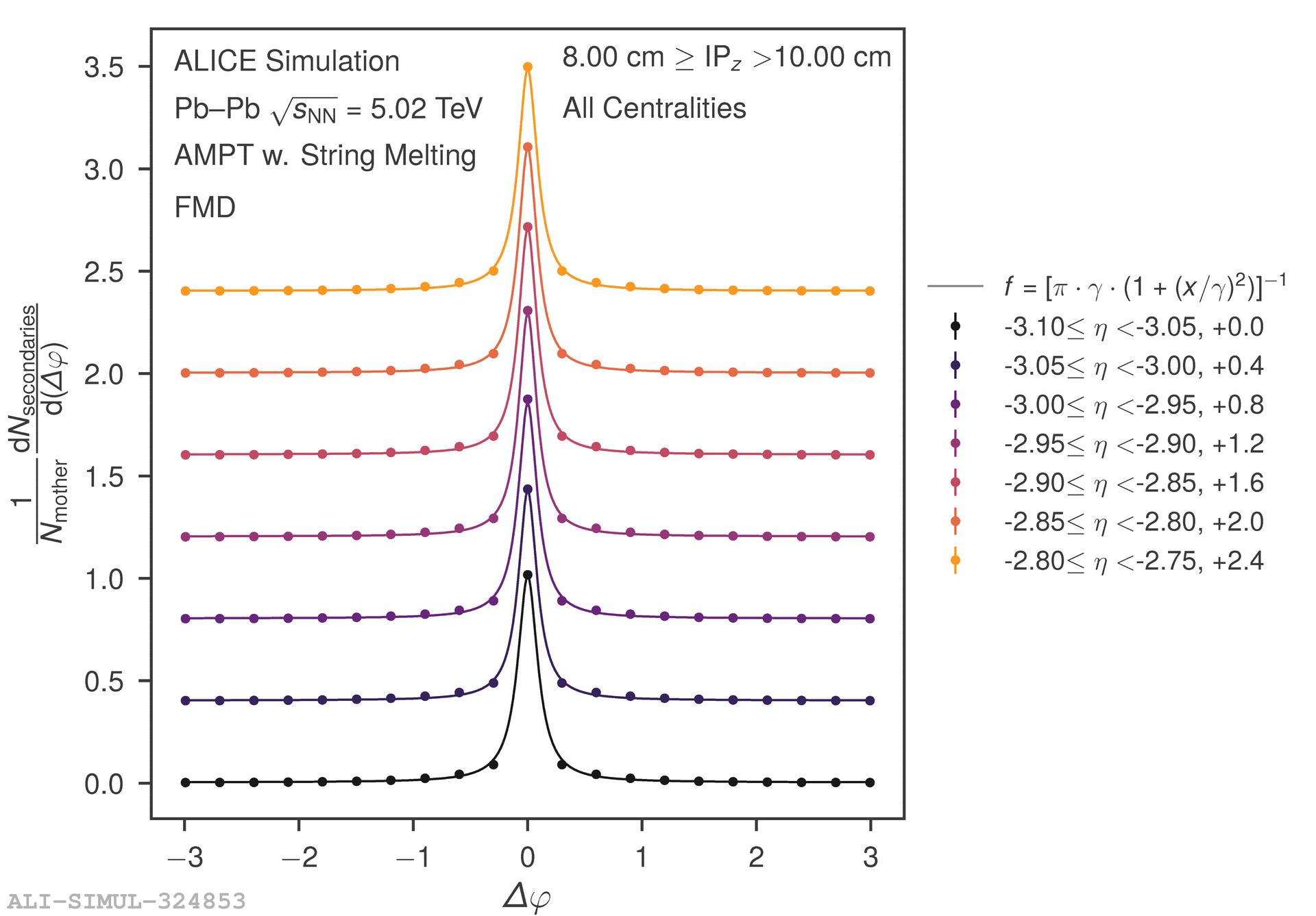
Figure: Distribution of a secondary particle around its primary mother particle. Plots are shifted by a constant.
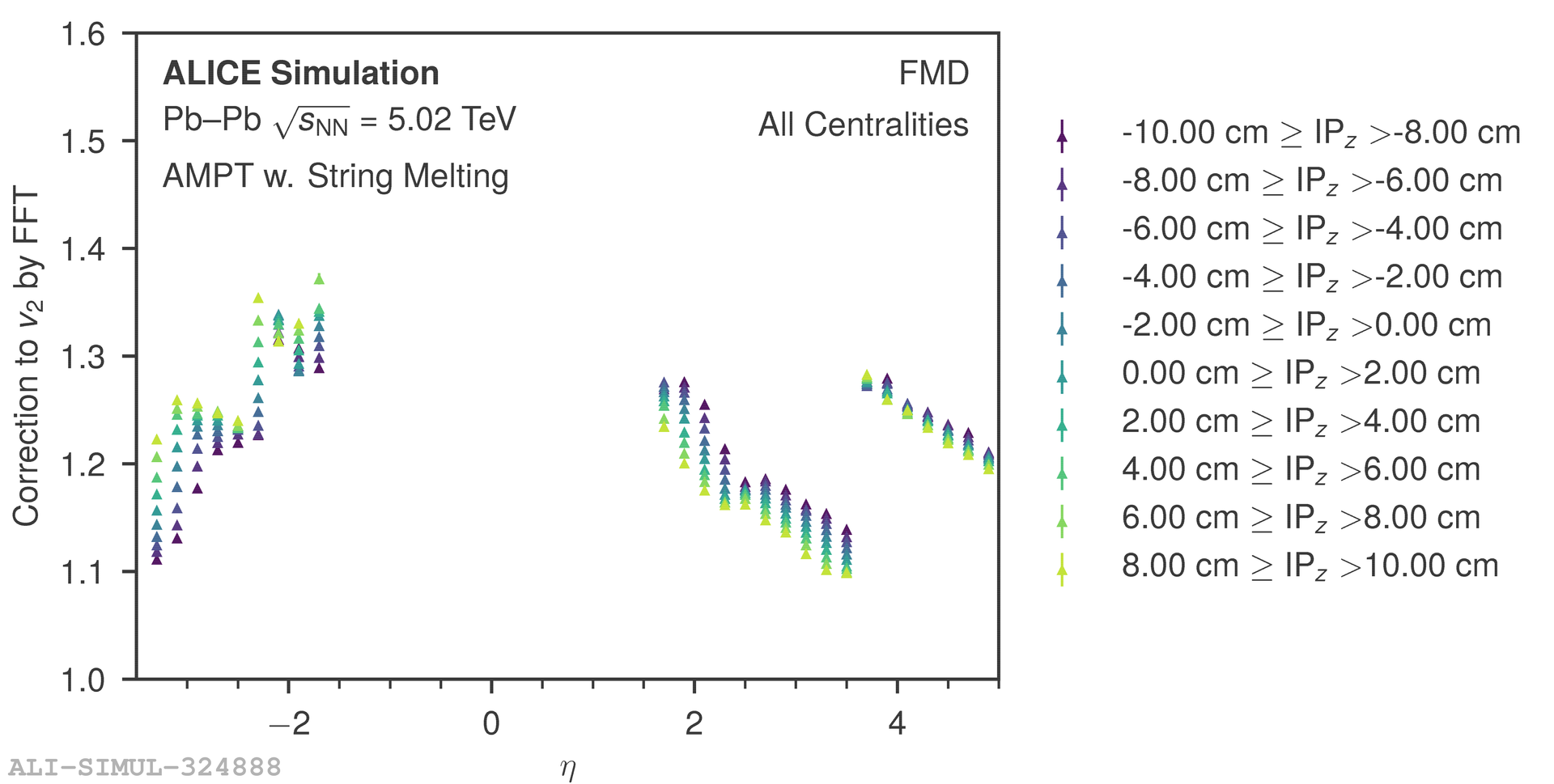
Figure: Correction values to \( v_2 \)
distribution of secondaries around primary particles
results
pb-pb
two particle cumulant with small eta-gap
Figure: \( v_n\{2,|\Delta \eta| > 0\}\) as a function of \( \eta \).
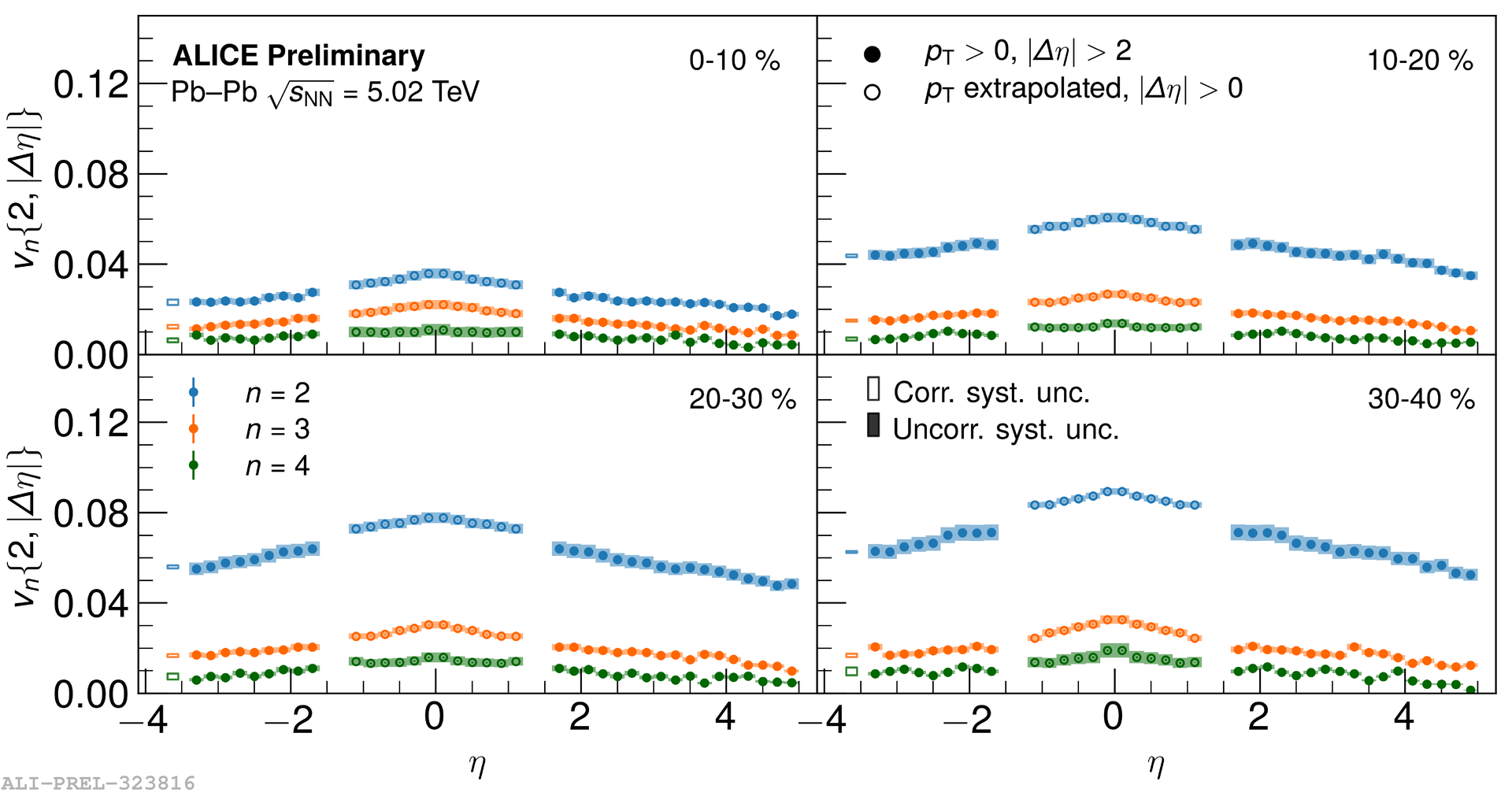
NEW
-
Ordering of harmonics \( v_2 > v_3 > v_4 \)
-
\( v_n \) increasing from 0 - 40 %
-
Wide range in \( \eta \) shows \( v_n \) decreasing as a function of \( | \eta | \)
two particle cumulant with small eta-gap
Figure: \( v_n\{2,|\Delta \eta| > 0\}\) as a function of \( \eta \).
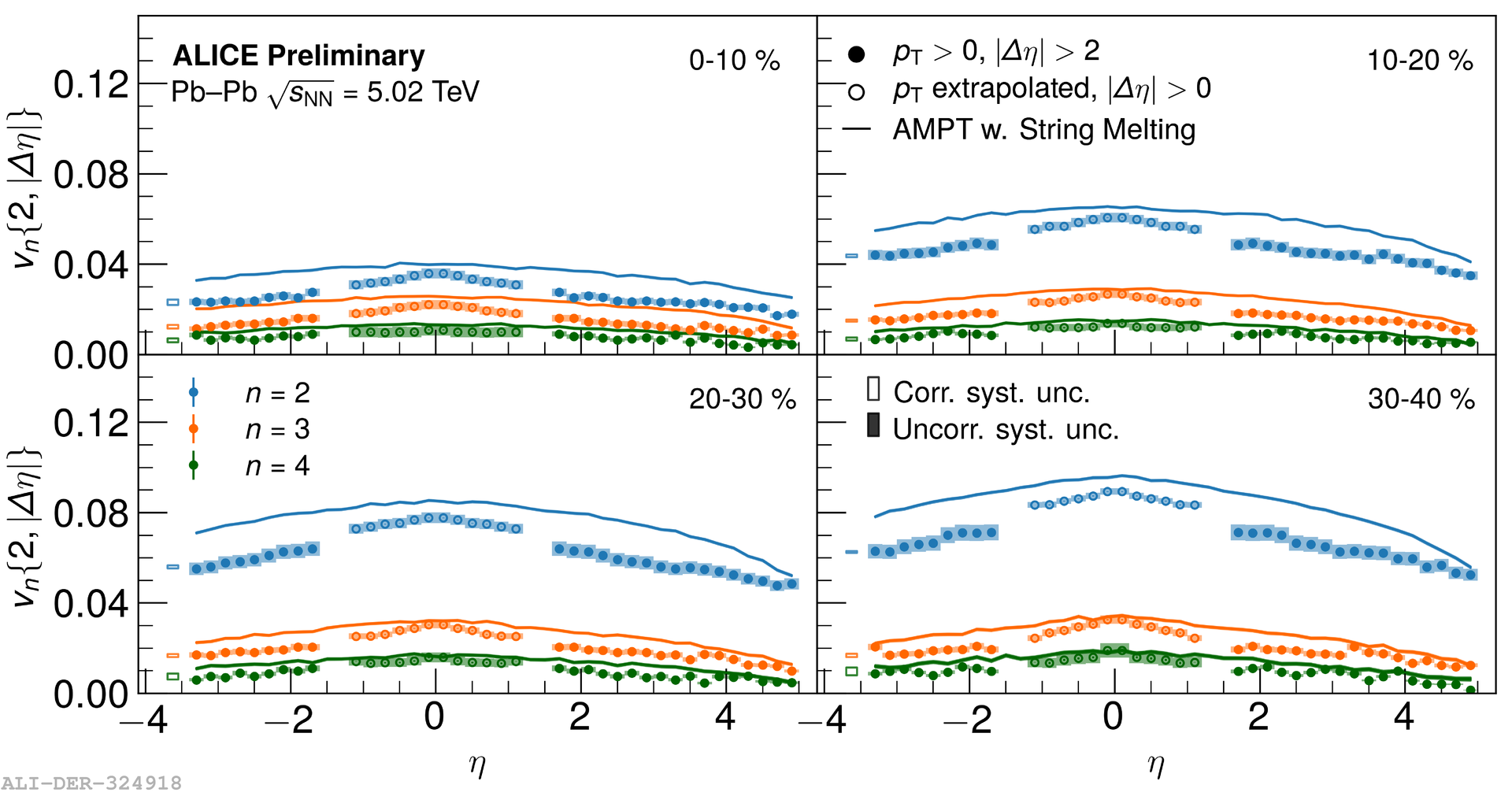
NEW
-
Ordering of harmonics \( v_2 > v_3 > v_4 \)
-
\( v_n \) increasing from 0 - 40 %
-
Wide range in \( \eta \) shows \( v_n \) decreasing as a function of \( | \eta | \)
-
AMPT w. String Melting [Lin, Zi-Wei et al. Phys.Rev. C72 (2005)]
- describes the data qualitatively, but not quantitatively
Figure: \( v_2\{2,|\Delta \eta| > 2\}\) and \(v_2\{4,|\Delta \eta| > 0\}\) as a function of \( \eta \).
- Introducing 4-particle cumulant and 2-particle cumulant w. a large \( \eta \)-gap
-
Flat shape \( \rightarrow \) Implies small \( \eta \)-gap in central heavy ion collisions might not be enough:
- to suppress non-flow
- for factorization
4-particle cumulant and 2-particle cumulant with a large eta-gap
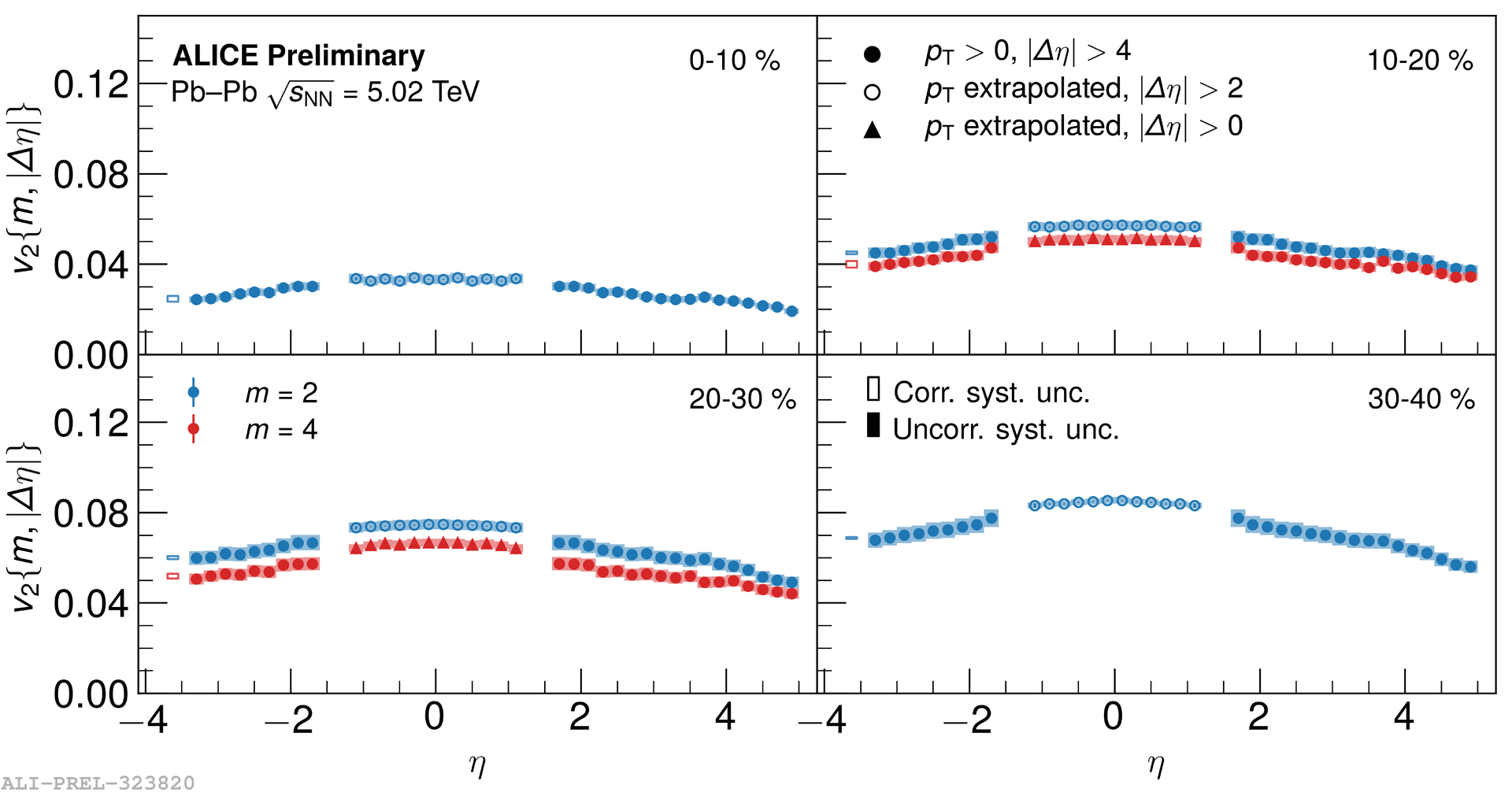
NEW
Figure: \( v_2\{2,|\Delta \eta| > 2\}\) and \(v_2\{4,|\Delta \eta| > 0\}\) as a function of \( \eta \).
4-particle cumulant and 2-particle cumulant with a large eta-gap
NEW
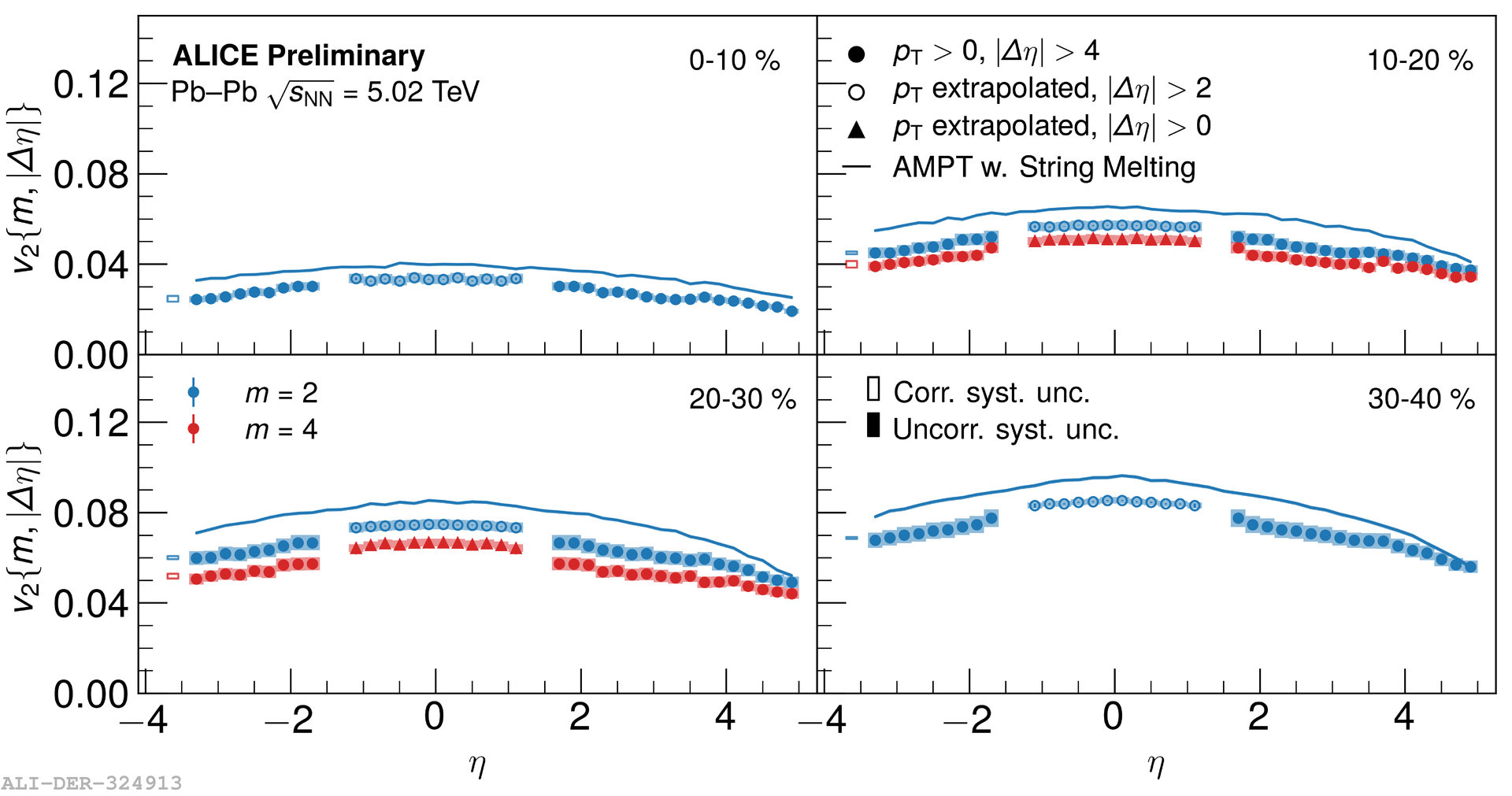
- Introducing 4-particle cumulant and 2-particle cumulant w. a large \( \eta \)-gap
-
Flat shape \( \rightarrow \) Implies small \( \eta \)-gap in central heavy ion collisions might not be enough:
- to suppress non-flow
- for factorization
-
AMPT w. String Melting [Lin, Zi-Wei et al. Phys.Rev. C72 (2005)]
- describes the data qualitatively, but not quantitatively
summary and overview
- \(v_n (\eta)\) with Pb-Pb 5.02 TeV in a wide range in pseudorapidity
- \( v_n \) measured w. large gap and 4-particle cumulant: more flat shape than \( v_n \) w. a small gap
-
AMPT has qualitative agreement, but improvements are needed
-
Future comparisons to 3+1D hydrodynamic calculations:
-
can constrain the initial state models
-
study longitudinal dynamics of the created hot and dense matter
-
summary
back-up slides

Figure: \( p_T\) differential flow measurements.
- FMD measure all charged particles, i.e. \( p_T > 0 \) GeV/c
-
TPC measure charged particles with
\( p_T > 0.2 \) GeV/c- additional cut \(p_T < 5\) GeV/c
-
This will increase flow in TPC, wrt. the FMD
- is corrected with MC
momentum in the fmd and tpc
Figure: Data points: \( v_n \{ 2\},|\Delta \eta|> 0 \) in Pb-Pb 5.02 TeV.
Boxes: Standard Q-cumulant \( v_n \{ 2\} \) from [ALICE Collaboration,
Phys.Lett. B762 (2016)] in Pb-Pb 2.76 TeV.
pseudorapidity dependence on vn in pb-pb 2.76 tev
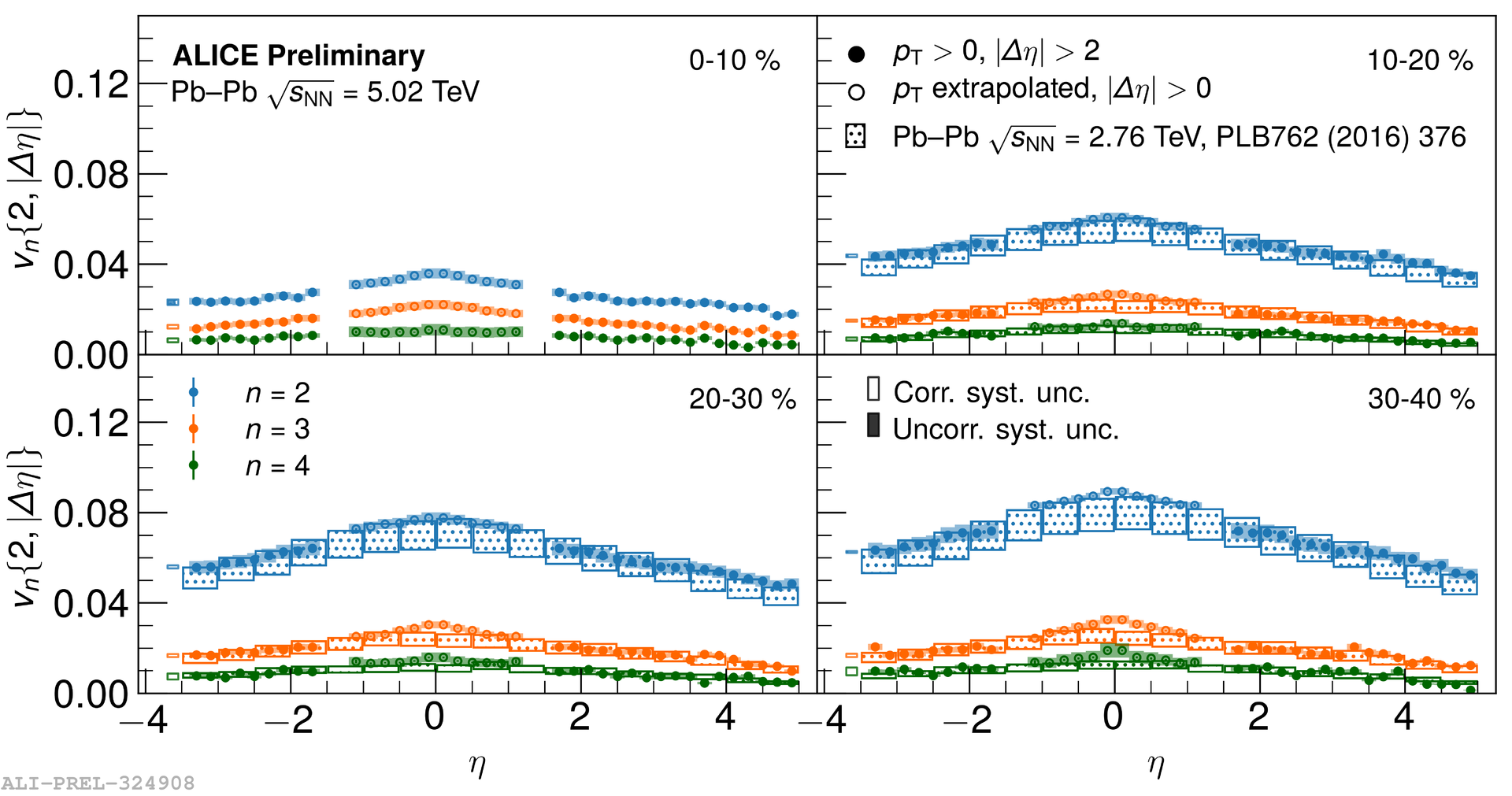
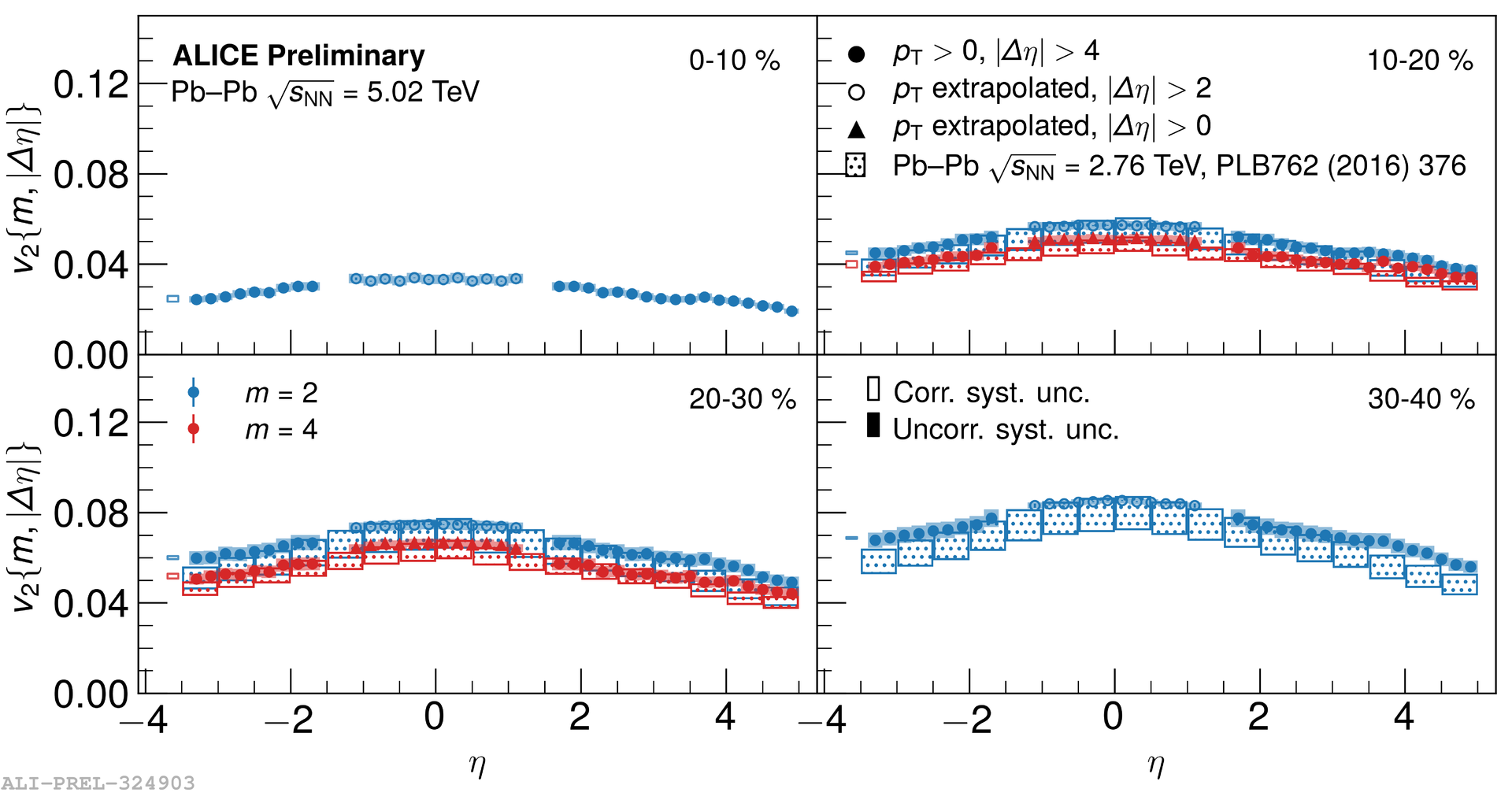
Figure: Data points: \( v_2 \{ 2\},|\Delta \eta|> 2 \) and \( v_2 \{ 4\},|\Delta \eta|> 0 \) in Pb-Pb 5.02 TeV.
Boxes: Standard Q-cumulant \( v_2 \{ 2\} \) and \( v_2 \{ 4\} \) from [ALICE Collaboration, Phys.Lett. B762 (2016)] in Pb-Pb 2.76 TeV.
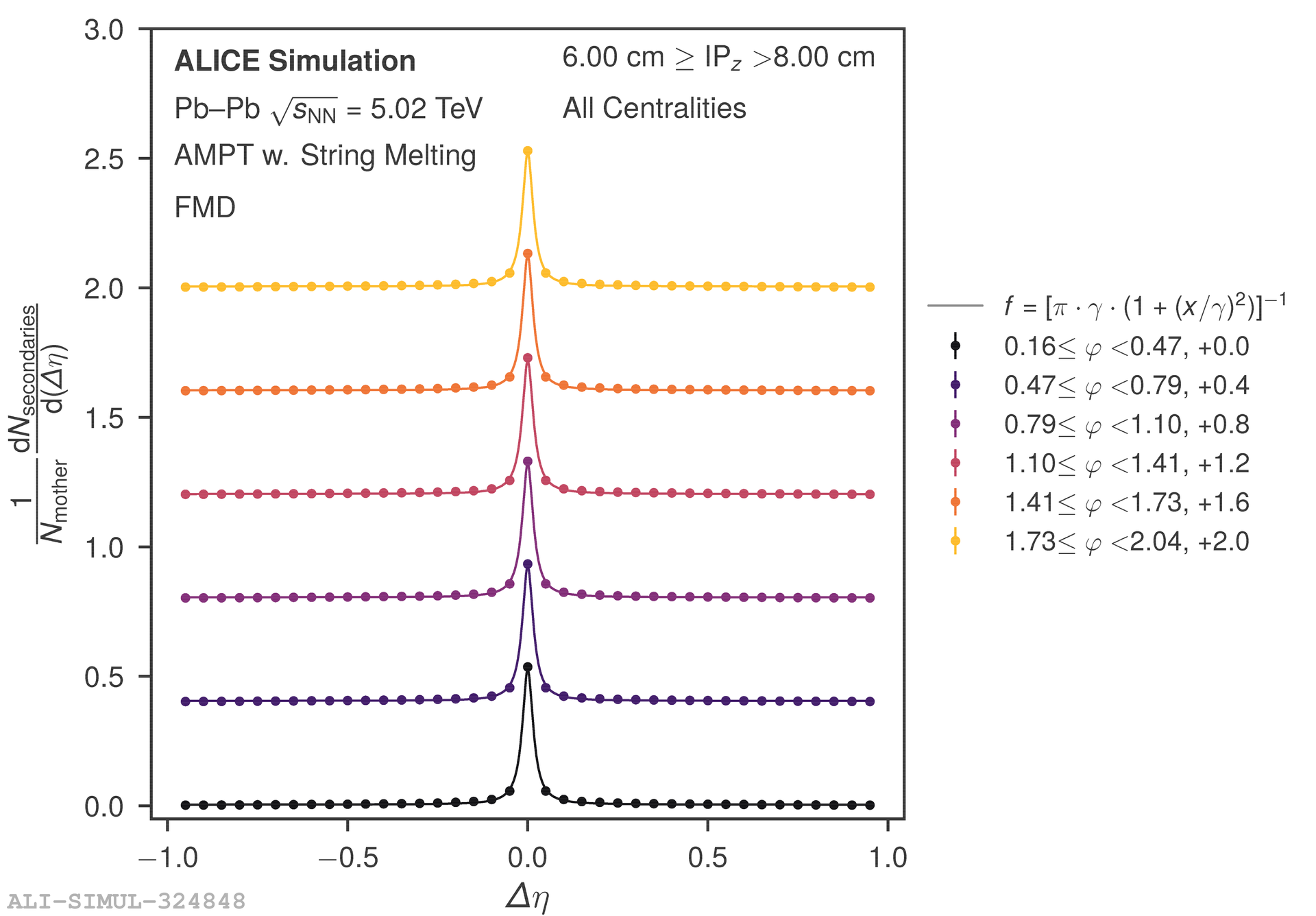
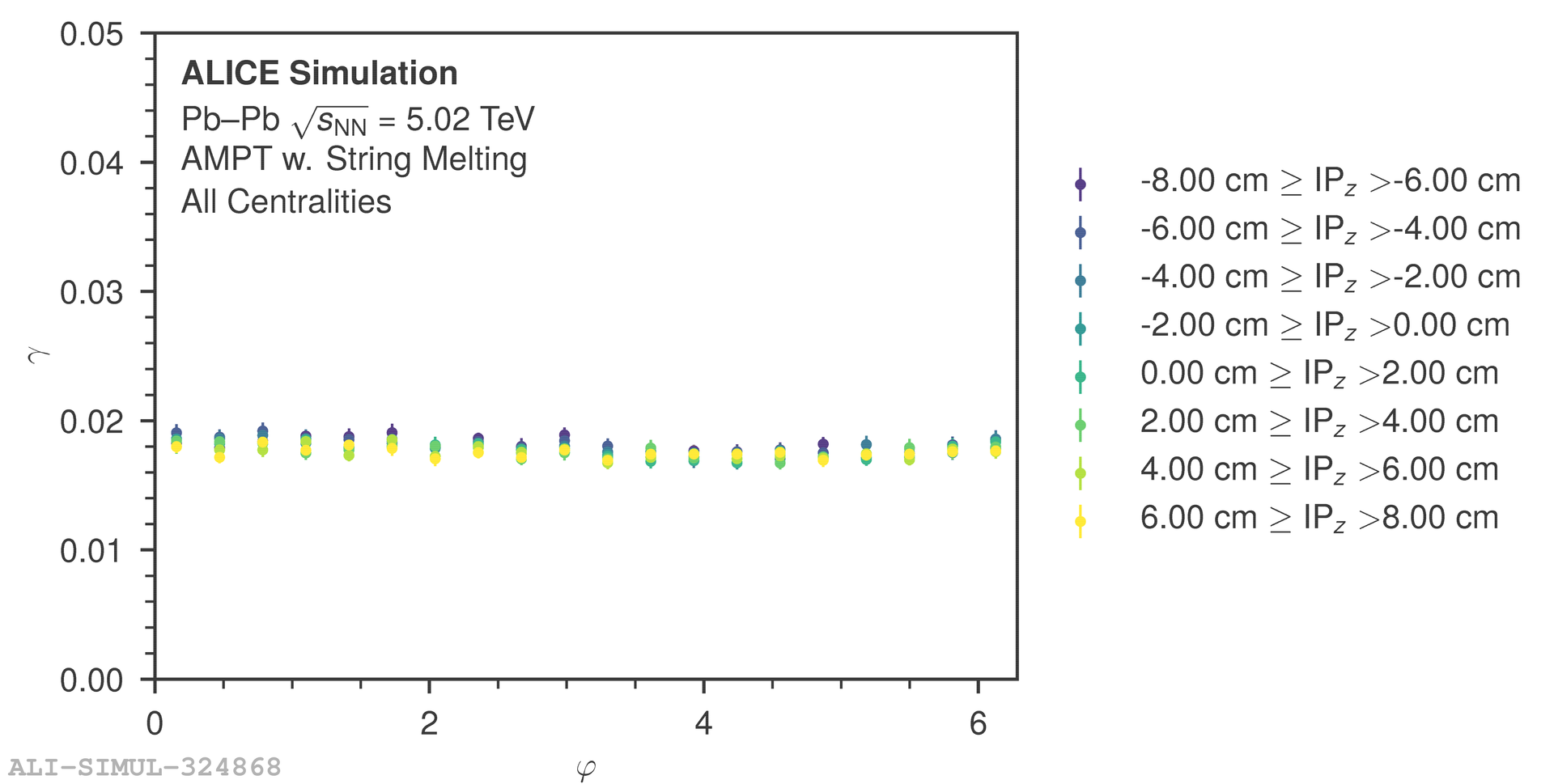
-
Analysis repeated in \( \eta \)
- \( \Delta \eta \) of observed secondary particle to primary particle
- Fourier transform \( f(\eta) \) for each vertex and \( \varphi \) bin
- Width of peaks are constant at 0.02
secondaries in the fmd
Figure: Widths of peaks of the distributions.
Figure: Distribution of a secondary particle around its primary mother particle. Plots are shifted by a constant.
secondaries in the fmd - correction to v3 and v4
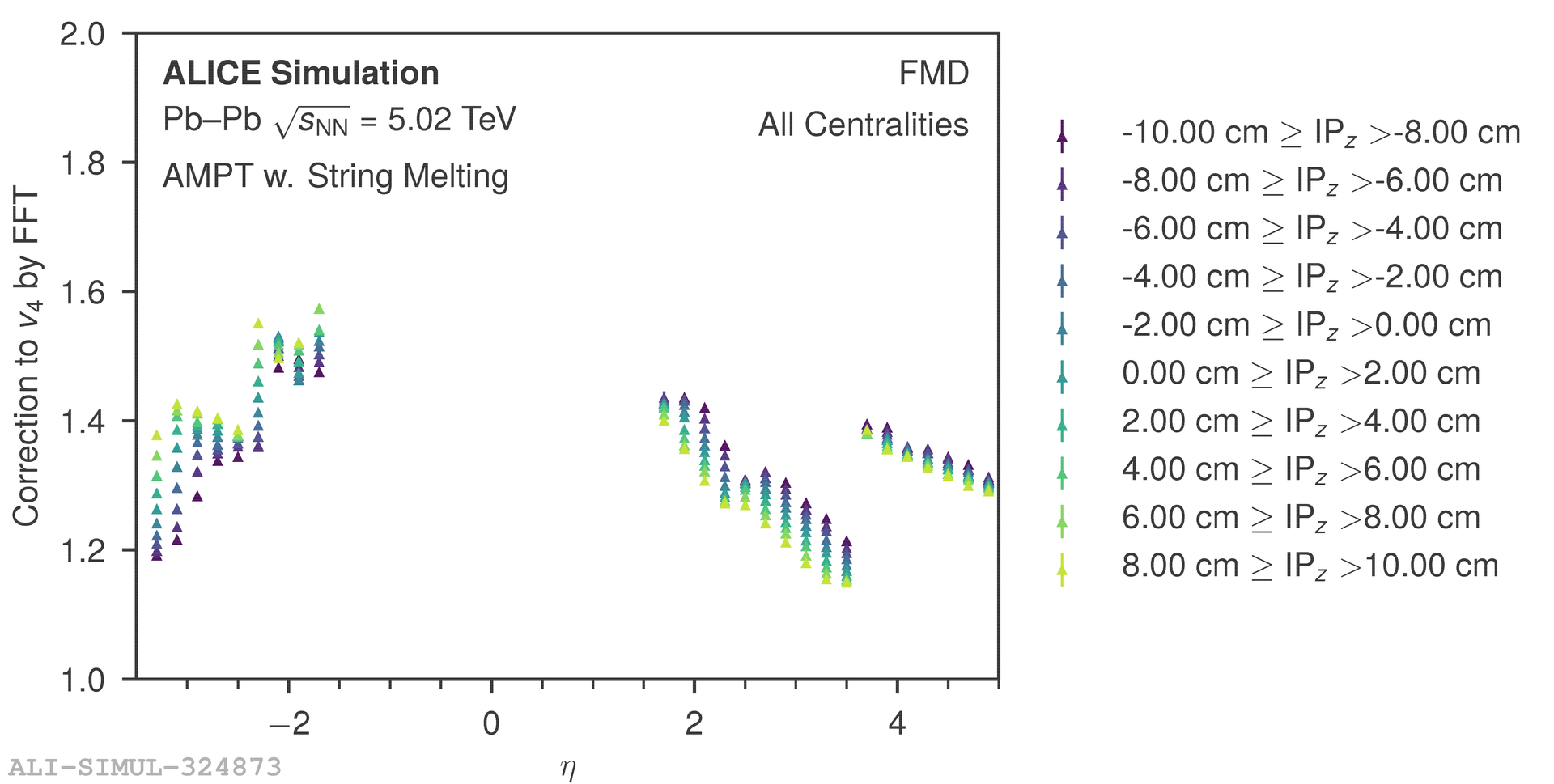
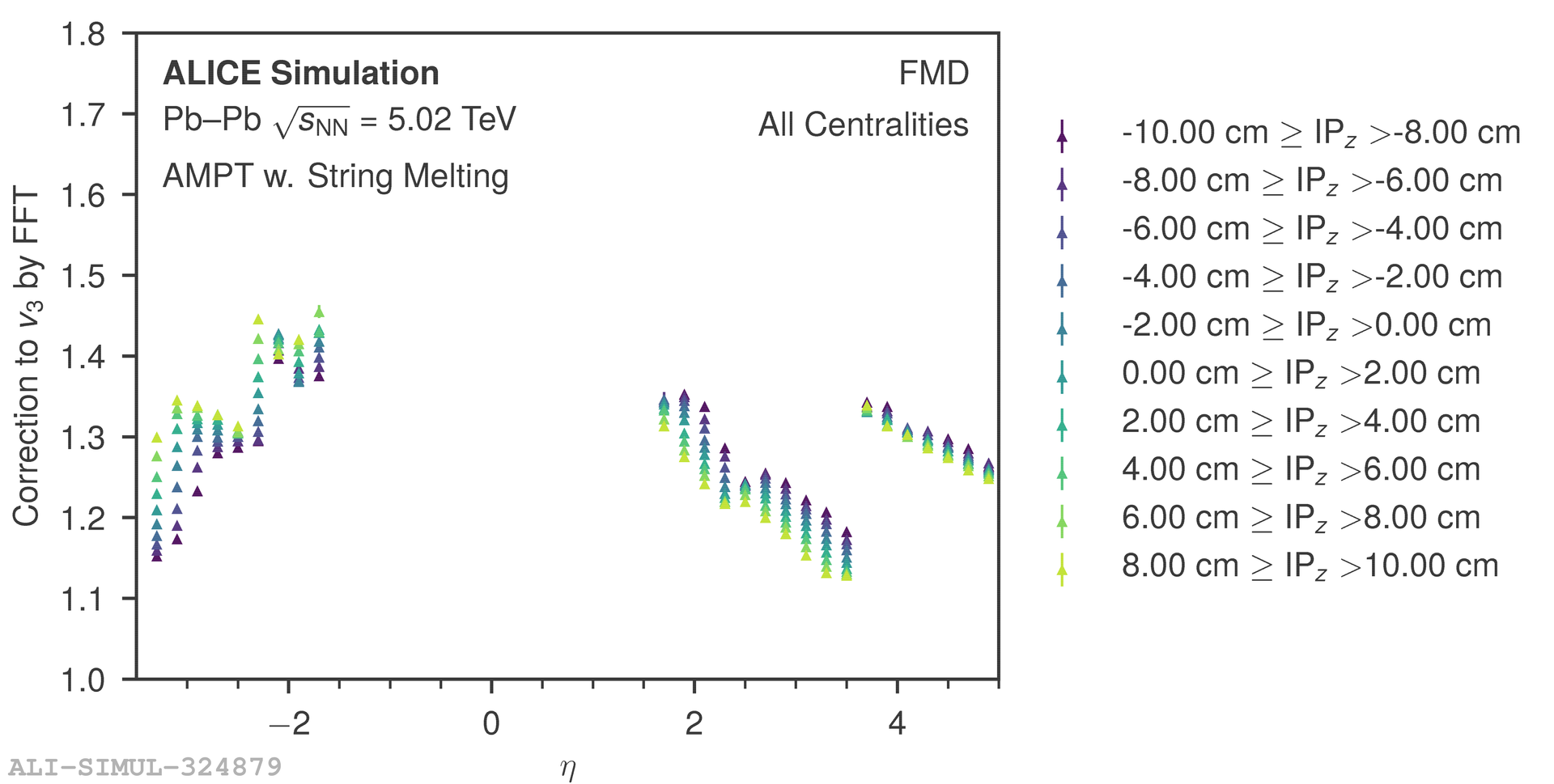
Figure: Correction to \(v_3\) for the contamination of secondary particles in the FMD.
Figure: Correction to \(v_3\) for the contamination of secondary particles in the FMD.